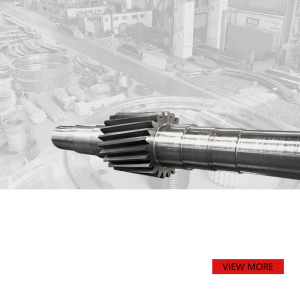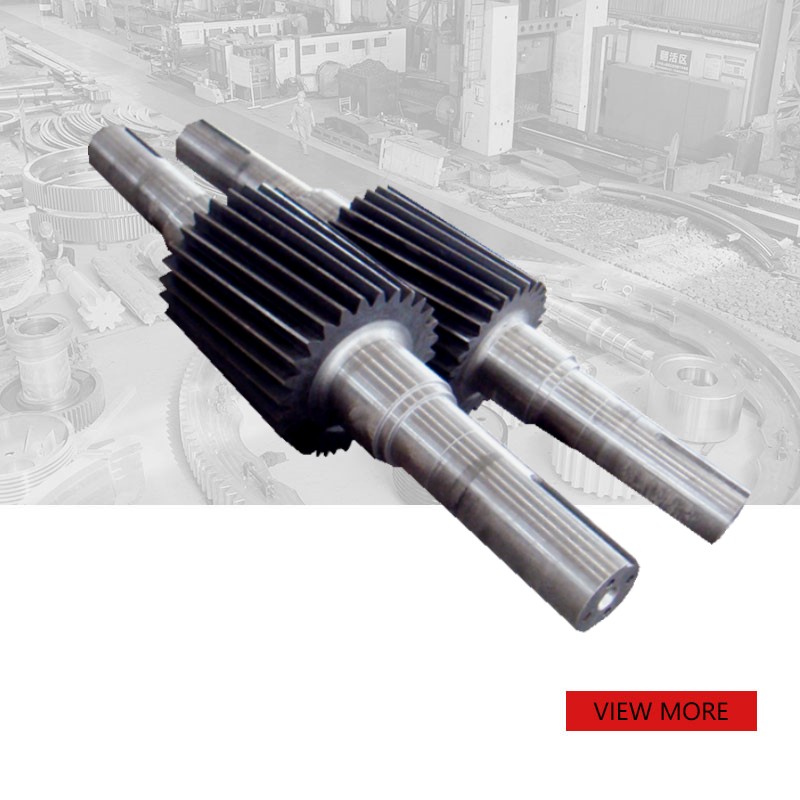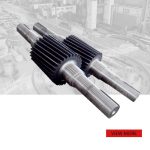
Custom forged steel large helical gear shaft
PRODUCT PARAMETERS
Description
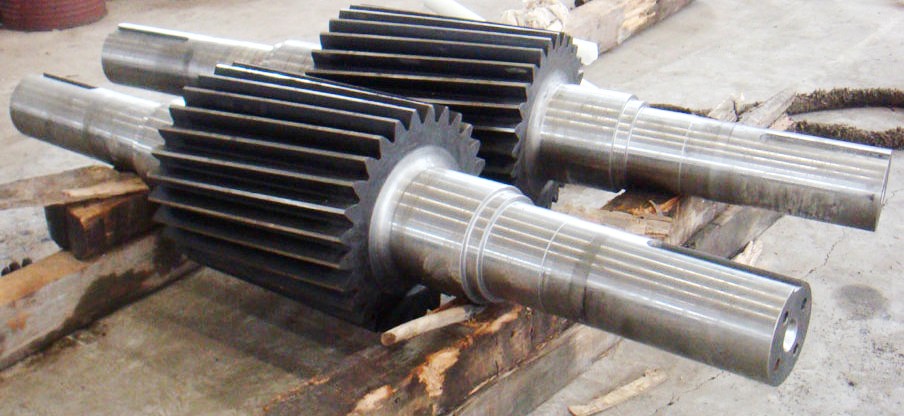
Overview: Definition of gear shaft
The gear shaft is an important mechanical part, mainly used to connect gear systems to achieve power transmission and motion conversion. The gear shaft consists of three parts: the middle diameter shaft, the outer diameter shaft and the side diameter shaft. The outer diameter shaft is equipped with an inner cylindrical gear. The middle diameter shaft and the outer diameter shaft can also be replaced with different diameters and gear pressure angle parameters as needed. Gear shafts play a key role in mechanical systems and can transmit power from other components to transmission gears, drive wheels, etc., thereby achieving power transmission and motion conversion between mechanical components.
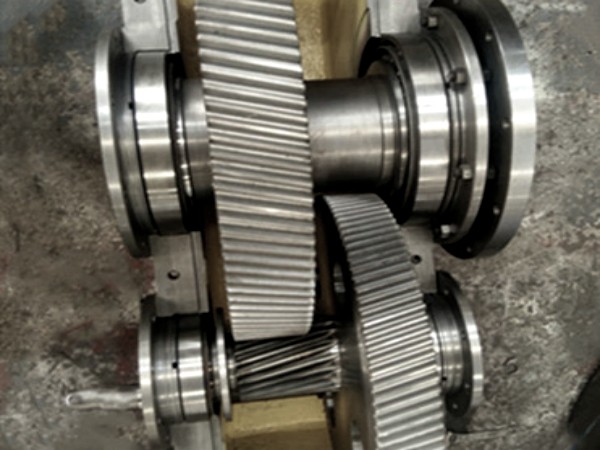
Gear shaft classification
1: According to the different shapes of the axis, gear shafts can be divided into two categories: crankshafts and straight shafts.
2: According to the load-bearing conditions, gear shafts can be divided into:
Rotating shaft: It bears both bending moment and torque during operation. It is the most common shaft in machinery, such as the shafts in various reducers.
Spindle: It is used to support rotating parts and only bears bending moment without transmitting torque. Some spindles rotate, such as the shafts of railway vehicles; some spindles do not rotate, such as the shafts supporting pulleys.
Transmission shaft: It is mainly used to transmit torque without bearing bending moment, such as the long optical shaft in the crane moving mechanism.
The angle that the teeth of a helical gear make with its shaft of rotation depends on the angular velocity it must transmit:
If the angular velocity transmitted is low, the angle must be between 5° and 10°.
If the angular velocity transmitted is average, the angle must be between 15° and 25°.
If the angular velocity transmitted is high, the angle should be around 30°.
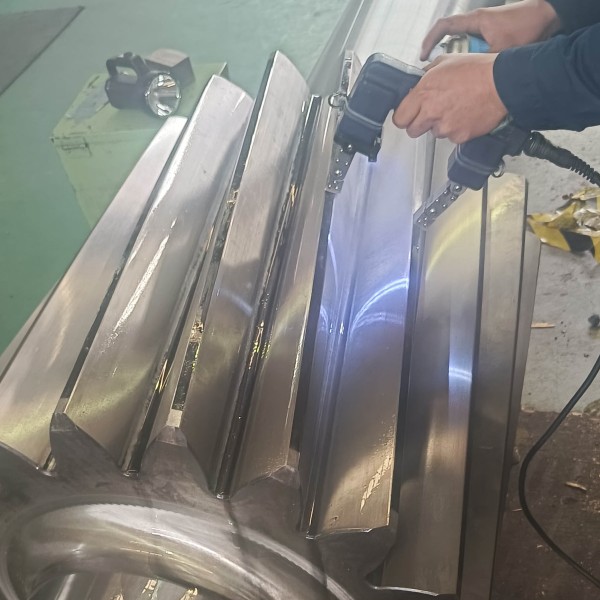
Advantages and Disadvantages of Helical Gears
Advantages:
1: Smooth power: In helical gear transmission, we can adjust the meshing angle of the gears as needed. Because the meshing area of the gears is larger, it is smoother in the process of transmitting power, reducing vibration and noise; It is conducive to the normal operation of the machine.
2: High transmission efficiency: In helical gear transmission, the meshing area of the gears is larger, so the meshing force is also greater, thereby improving the transmission efficiency to meet the requirements of high-power and high-speed transmission.
3: Flexible steering: Helical gear transmission has excellent steering flexibility, so it can realize a variety of transmission modes, such as forward, reverse, high-speed and low-speed switching, synchronization, etc. Therefore, it is widely used in various fields, such as construction machinery, lifting machinery, rail transportation, etc.
4: High mechanical strength: In helical gear transmission, the meshing area between gears is larger, and the meshing force generated is also larger, so it has excellent mechanical strength and can withstand a large workload.
5: Strong wear resistance: The meshing area between gears in the helical gear transmission system is enlarged, which constitutes more meshing force and reduces friction between gears, thereby greatly improving its wear resistance and having high reliability.
Disadvantages
1: High noise: Although the helical gear transmission has a large meshing area and meshing force and can achieve smooth transmission, its meshing angle is different from that of the spur gear, and the noise generated during operation is relatively large, which may have a certain impact on the environment.
2: High processing difficulty: In the helical gear transmission, the gear tooth shape is different from that of the spur gear. Therefore, when calculating the number of teeth, manufacturing the tooth shape, and performing heat treatment, the processing difficulty will increase significantly, and the requirements for the processing technology are also very high.
3: High precision requirements: In order to ensure the high precision of the helical gear transmission, precision processing equipment is required in the manufacturing process. However, the production process of this transmission device is very complicated and expensive.
REQUEST A QUOTE
RELATED PRODUCTS
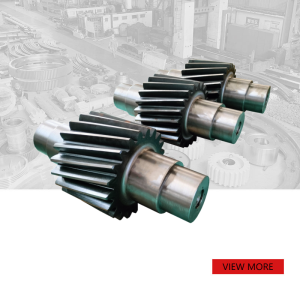
Custom forged 4140 steel helical gear shaft for ball mill
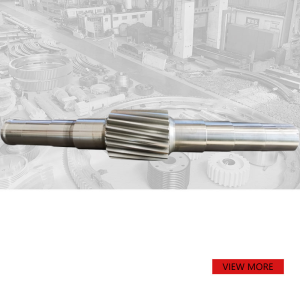
34CrNiMo6 Alloy steel Helical gear shaft rotary kiln
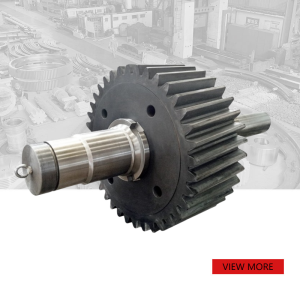
Spur gear shaft forging high quality large diameter Ball Mill
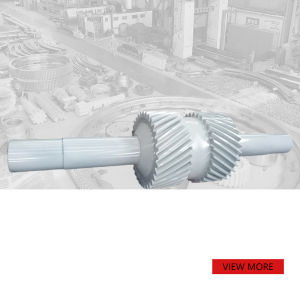
Non-standard alloy steel large Double helical gear shaft with cutting groove
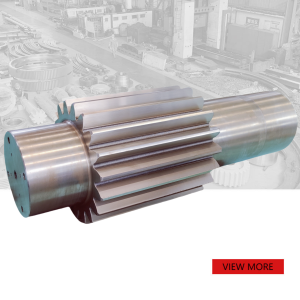
Customized non-standard Large module gear shaft transimission parts
